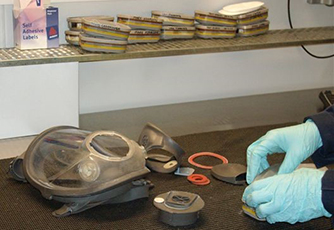Both private and public organisations have never been under more scrutiny when it comes to:
- Responsible workplace health and safety
- Financial accountability to stakeholders
For organisations that utilise Personal Protective Equipment (PPE), the implications of this are:
- An increased need to ensure that PPE is effectively decontaminated and maintained in good condition
- At the same time, ensuring these assets are managed as efficiently as possible.
In order to meet their obligations to their employees and stakeholders, organisations need to transition to an EFFECTIVE and EFFICIENT complete lifecycle management system for their PPE assets.
How Previous Processes Have Become Outdated
1. Cleaning, Maintenance & Decontamination
To the casual observer, it would probably seem that effective decontamination of PPE after exposure would be a given. However, various studies in recent years, have revealed that existing processes within some industries are largely inadequate.
For example, since around 2002 many governments have been introducing ‘presumptive legislation’ for firefighters who contract chronic and terminal illnesses to access compensation. The presumption being that they contracted the condition as the result of exposure while performing their duties. This has stemmed from studies that show inadequate decontamination and insufficient laundering of firefighting PPE using existing processes.
2. Procurement and Management
In the past, many supply contracts have been subject to a traditional tender process with the outcome being that the organisation has been locked into an inflexible situation for up to 10 years in some cases.
The implications of this have included:
- Inflated lead times for new stock or repairs to existing stock
- Inability to adapt to the latest innovations and product developments
- Having to carry more stock on hand than necessary
- Inability to source suitable products from a range of suppliers
- Inability to respond to changing circumstances such as with the legislation changes mentioned previously
A System for the Current Day…and the Future
One solution that is helping many organisations manage their PPE as effectively and economically as possible, is the IDS Asset Lifecycle Management System (ALMS).
A key part of the IDS ALMS is the Asset Lifecycle Database. Over two years in development, and utilising a massive collective knowledge of the PPE industry, the database allows clients full control over their PPE assets.
Booking a Service
When you have PPE that needs to be serviced, everything from pick-up, handling, and delivery back to you, is handled by the system.
Ordering More PPE
You will have access to your own customised online catalogue made up of pre-determined products at set prices. IDS warehouses these for you so you only need to purchase (using your online catalogue) as required.
Tracking of Items
A vital feature of the system, each item is tracked (using a variety of identification methods), so you know exactly what condition it is in, its history, and where it is in its lifecycle. The flexibility and power of this knowledge when it comes to managing your assets and ensuring that PPE is in good condition cannot be overstated.
Responding to Changing Needs
IDS works with a range of suppliers. You can get quotes on new equipment that meets your required standards.
Financial Reports
You can generate a number of useful reports that you will soon find indispensable when it comes to planning and budgeting.
For advice on using a PPE management system that meets the current day (and future) needs of organisations, please feel welcome to get in touch with IDS for a consultation with one of our experienced staff.


